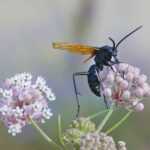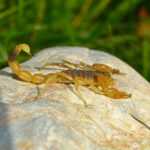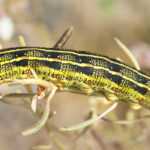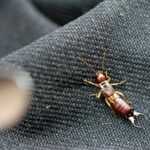How to Get Rid of Flying Bugs in Your Home Now
Learn smart strategies to eliminate pesky flying bugs from your space. Keep your home fresh, clean, and bug-free with these simple solutions.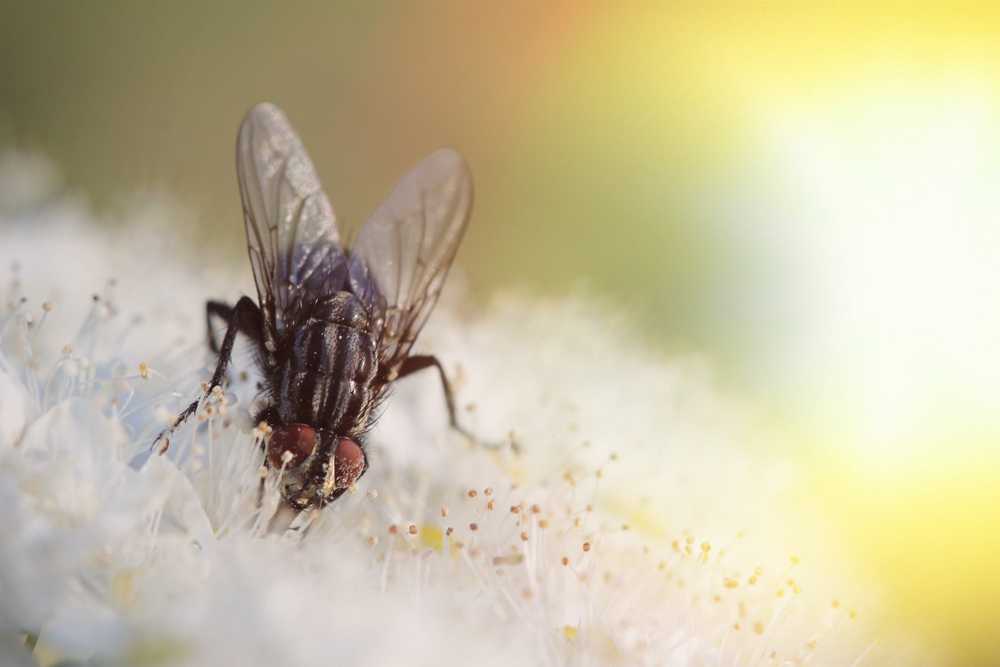
How to Get Rid of Flying Bugs in Your House Quickly
Dealing with flying bugs in your home? This article covers how to identify common flying insects like gnats, fruit flies, drain flies, phorid flies, and clothes moths, and offers effective methods to eliminate them. For those interested in learning about unusual insects found in Arizona, check out this resource.
- Identifying the most common types of flying insects such as gnats, fruit flies, drain flies, phorid flies, and clothes moths is crucial for effective pest management.
- Utilize methods like sticky traps, DIY vinegar traps, and regular cleaning to eliminate these bothersome insects.
- Prevent infestations by maintaining a clean environment, including storing food properly, cleaning drains regularly, and taking out trash regularly.
Identifying Common Flying Bugs in Your Home
Flying insects in your home are not only a nuisance; they can also pose health risks and damage property. Identifying the type of pests is the first step in managing them effectively. The most common types of flying insects found indoors include fruit flies, drain flies, phorid flies, and clothes moths.
Each bug has its own habits and preferences. Fruit flies are typically drawn to decaying fruit and sugary substances, whereas drain flies and phorid flies prefer highly humid areas like drains and garbage disposals. Clothes moths can cause significant damage to fabrics and clothing.
Understanding the characteristics of these common invaders helps in dealing with them effectively. Let’s start with gnats.
Gnats
Gnats are tiny, winged insects often found hovering in swarms, especially in damp environments. They have long legs and long antennae, making them easy to identify. They are typically drawn to decaying organic material and moist soil, making overwatered houseplants a common breeding ground for fungus gnats. These small black flies are common in highly humid areas.
If gnats are present around your home, especially near potted plants or garbage cans, address the source of moisture to eliminate them and prevent further breeding. Sticky traps can also effectively catch these persistent pests to kill gnats.
Fruit flies
Fruit flies are small, oval-shaped insects that are often found around rotting fruit and other food materials. They are particularly attracted to overripe or decaying produce and sugary substances. These tiny flies have a distinctive appearance with their small size and red eyes, which makes them relatively easy to identify.
Fruit flies thrive in warm environments and are most common during late summer and fall. They can reproduce quickly, leading to larger infestations if not managed. Eliminate their food sources and use traps to control an infestation.
Drain flies
Drain flies, also known as moth flies, are light gray or tan in color and are usually found near drains and garbage disposals. These nocturnal insects are most active at night and lay their eggs in the organic material found in drains and other moist areas. The larvae live in the organic matter where they hatch.
Pouring boiling water down your drains regularly kills drain fly larvae and eggs. Cleanliness around drains helps prevent future infestations.
Phorid flies
Phorid flies are small black flies with a characteristic humpbacked appearance and long legs. They are often found in highly humid areas such as drains, garbage disposals, and decaying organic matter. These flies can bite and are known to be persistent indoor pests.
Clothes moths
Clothes moths are notorious for their larvae, which feed on fabrics, especially those made from animal fibers. These pests can cause significant damage to clothing, carpets, and other fabric items. The adult clothing moth has a lifespan of about 20 days, during which it lays eggs that hatch into larvae.
The larvae are often found in dark areas such as closets or storage bins. Regularly cleaning and vacuuming these areas, along with using moth repellents, can protect your fabrics.
Effective Methods to Get Rid of Flying Bugs
Eliminating flying insects in your home requires a combination of strategies. From sticky traps to DIY solutions and professional pest control, there are many effective methods. Regular maintenance practices like cleaning drains, storing food properly, and taking out trash regularly can also prevent future infestations.
If you’re dealing with a persistent pest problem, professional pest control services, including consulting a board certified entomologist, can provide thorough elimination of infestations by disrupting insect life cycles. Let’s explore some of the most effective DIY methods to get rid of these pesky bugs.
Use Sticky Traps
Sticky traps effectively catch gnats, fruit flies, phorid flies, and other small flying insects indoors. These traps attract bugs with bright colors, particularly yellow, and then hold them down with a sticky surface. They are especially useful for capturing the most common types of flying insects.
Monitor and replace sticky traps when they are full to maintain effectiveness. Regularly place these traps in areas where flying insects are commonly seen to significantly reduce their population.
DIY Vinegar Trap
A DIY vinegar trap can effectively eliminate fruit flies and gnats. Fill a small container with apple cider vinegar, cover it with plastic wrap, and poke a few small holes to allow insects to enter but make it difficult for them to escape.
The vinegar’s scent attracts the bugs, and once inside, they are unable to find their way out. This trap is particularly praised for its ability to lure and trap fruit flies and gnats.
Spray Solutions
Insecticidal sprays provide immediate results in reducing populations of flying insects in targeted areas. These sprays are particularly effective for quick elimination of bugs and can be used around entry points where insects are likely to enter your home.
When using insecticidal spray, avoid contact with eyes or skin and follow the instructions carefully to ensure safe and effective use.
Natural Remedies for Flying Bugs
Natural remedies can be just as effective in controlling flying bug populations for those who prefer eco-friendly alternatives. Essential oils, beer or wine traps, and boiling water are methods that manage these pests without harsh chemicals.
These natural solutions not only help you get rid of bugs but also contribute to maintaining a healthier and safer environment in your home.
Essential Oils
Essential oils can be a powerful, natural way to repel and even kill flying insects. Here are some effective options:
- Peppermint oil: Serves as a natural insecticide and can kill mosquito larvae in water.
- Eucalyptus oil: Known for its ability to deter blood-sucking insects.
- Lavender oil: Can be used in pillows and air sprays to keep various insects at bay.
These essential oils can be a great addition to your natural pest control methods.
Basil essential oil, with its mosquito-repelling properties, and thyme oil, which acts as an insecticide against house flies, are also great options. Using these oils in diffusers or sprays can keep your home free from flying pests while adding a pleasant aroma.
Beer or Wine Trap
A beer or wine trap is another effective natural remedy for controlling flying bugs. The fruity smell of beer or wine attracts fruit flies and gnats, luring them into the trap. An almost-empty bottle with a skinny neck can trap these insects effectively.
Leave a bottle with a small amount of stale beer or old wine in areas where you notice flying bugs. The insects will be drawn to the liquid and drown once inside.
This simple yet effective method can help manage bug populations without using chemicals.
Boiling Water
Boiling water is a straightforward and effective way to eliminate drain fly larvae and eggs. Bring water to a rolling boil and carefully pour it down affected drains to kill the larvae and eggs on contact.
Regularly performing this task keeps your drains clean and free from breeding pests.
Preventing Flying Bug Infestations
Preventing flying bug infestations requires a proactive approach. Regular cleaning and maintenance can keep these pests at bay. Ensuring your home is free from food waste, dead insects, and organic debris deters flying insects from taking up residence.
Implementing preventive measures such as maintaining window screens and weather stripping, storing food in airtight containers, cleaning drains regularly, and taking out trash regularly significantly reduces the likelihood of an infestation.
Clean Drains Regularly
Regularly cleaning your drains is one of the most effective ways to prevent drain flies and phorid flies. These pests prefer to breed in organic material found in drains and garbage disposals, so eliminating this debris is crucial. Scrubbing and cleaning drains regularly helps remove the organic matter that serves as a breeding ground.
Pouring boiling water down your drains can also kill any existing larvae and eggs, further preventing an infestation. Keeping your drains clean is a simple yet powerful step in maintaining a pest-free home.
Store Food in Airtight Containers
Storing food in airtight food containers prevents attracting fruit flies, house flies, and other insects. Sealed containers keep food inaccessible to pests, minimizing their attraction to your home.
This practice is especially important for storing pet food, vegetables, and other perishable items.
Maintain Window Screens and Weather Stripping
Maintaining window screens and weather stripping keeps flying insects from entering your home. Ensuring that window screens are intact and weather stripping is effective prevents bugs from finding their way inside.
Regularly inspecting and repairing damaged screens or weather stripping significantly reduces the chance of an infestation.
When to Call Professional Pest Control
Sometimes, despite your best efforts, a pest problem can become too overwhelming to handle on your own. If pests are widespread in multiple areas of your home, it may be time to call a professional pest control company. Professional pest control services are equipped to manage and eliminate infestations beyond DIY solutions.
Hiring a pest control expert is especially necessary if multiple DIY approaches have not decreased the pest population. Consulting a board certified entomologist can help identify the species involved and recommend the best treatment plan.
Persistent Infestations
If a large number of flying insects persist despite various DIY methods, consider hiring a professional pest control service. Persistent infestations may indicate unidentified or unmanaged breeding grounds. Professional pest control companies have the expertise to locate and eliminate these breeding grounds.
Dealing with flying bugs in your home can be frustrating, but with the right knowledge and tools, it’s a manageable task. Identifying the common types of flying insects, such as gnats, fruit flies, drain flies, phorid flies, and clothes moths, is the first step in effectively controlling them. Using methods like sticky traps, DIY vinegar traps, and natural remedies can help eliminate these pests swiftly.
Preventing future infestations through regular cleaning, proper food storage, and maintaining window screens and weather stripping is crucial. If you find yourself facing a persistent infestation, don’t hesitate to call a professional pest control company.
Frequently Asked Questions
How do bugs fly?
Bugs fly by using muscles that change the shape of their thorax, allowing wings—outgrowths of their exoskeleton—to flap and create lift. This efficient movement, along with specific wing strokes, helps them soar through the air.
What is a flying bug that looks like a wasp but isn’t?
The flying bug that looks like a wasp but isn’t is the hoverfly, also known as syrphid fly. These insects are beneficial pollinators and are easily mistaken for wasps due to their appearance.
What kind of bugs can fly?
Flying bugs include gnats, fruit flies, house flies, phorid flies, bees, wasps, butterflies, and moths. So next time you see one buzzing around, you’ll know there are many species that take to the skies!
How can I identify fruit flies in my home?
You can spot fruit flies by looking for small, oval-shaped insects with red eyes, especially around overripe fruits or sugary areas in your home. Keep an eye out for them near those potential food sources!
What are some natural remedies for getting rid of flying bugs?
You can effectively get rid of flying bugs by using essential oils such as peppermint and eucalyptus, setting up beer or wine traps, and pouring boiling water down drains to eliminate larvae. These methods are simple and often quite effective.
